Friday, 1 July 2011
Distance 20 km
Duration 4 hours 30 minutes
Ascent 472 m, descent 415 m
Map 149 of the TOP 100 lime-green series
Topoguide (ref. 4304) Gorges de la Loire sauvage
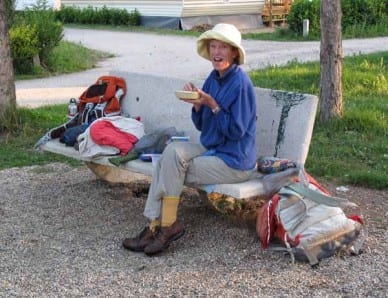
Keith pinched and punched me as gently as possible to welcome in the new day and the new month. We crawled out, shivering, and took our things over to the playground, where there were seats, to eat our muesli, but we did not stay long as we needed to get our blood flowing.
It was not quite 7 o’clock when we left. As usual we took advantage of the road, empty at that early hour, preferring its flatness to the more challenging GRP. Our aim was to get to Beauzac as quickly as possible in the hope of a second breakfast.
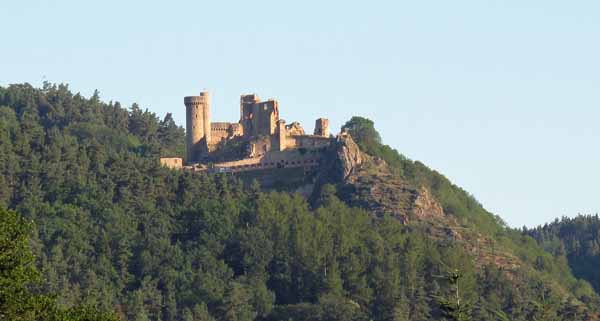
The day was cold but fine and we swung along at a good speed. Far away behind us on a rocky spur we could see the Château of Rochebaron, now a ruin but formerly the centre of power in the district.
The present fifteenth-century ruin was a rebuild of a much older fortress, which in turn occupied the site of a Gallo-Roman oppidum. Such is the value of a good strategic position.
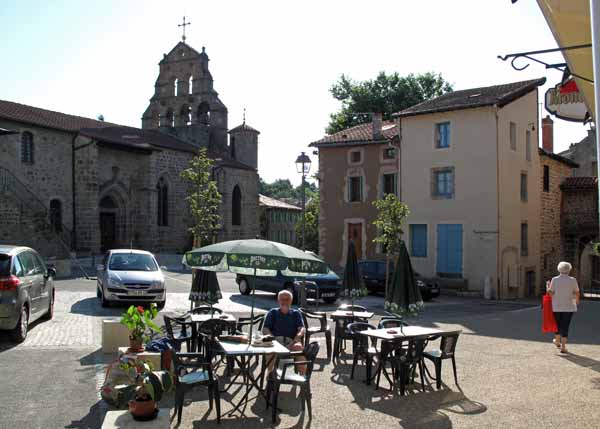
I was pleased that I got as far as Beauzac (about 6 km) without fading. The main feature of the village was the church with its handsome bell-wall, and in an enclosed square behind it, reached through an archway, was a group of shops, including a bar.
We got a croissant and a pain aux raisins at the boulangerie and ate them with our coffee in the sunshine. For the second morning in a row, we had got the last pains aux raisins in the shop, and they were Keith’s favourites, so he felt very lucky.
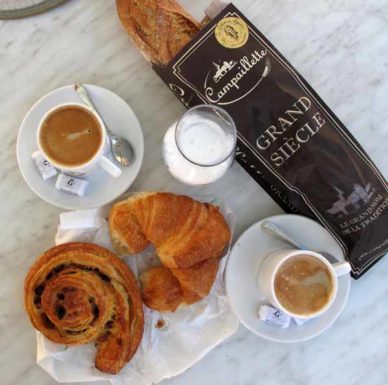
It was only about a kilometre on the road before we came to the GRP and this time we went with it – indeed we followed it for the rest of the day. The first part was a small tar road that dropped like a stone through the forest, occasionally twisting over a side stream as it plunged towards the Loire.
Near the bottom of the descent we met an old woman in skirts walking up with a big black dog. Although she was pulling a large suitcase on wheels and had an overnight bag slung over each shoulder, she looked quite comfortable, and passed us with a cheerful “Bon jour!”. She had a long climb ahead but she had probably done it scores of times before.
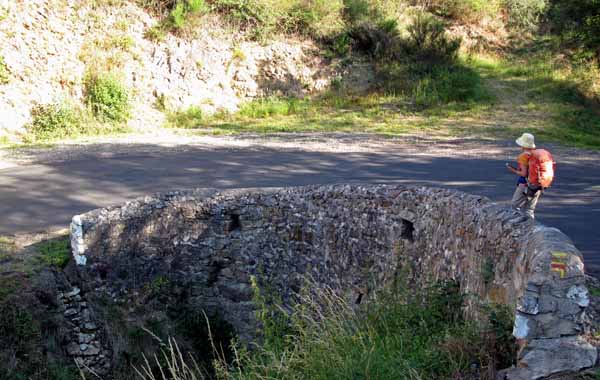
The road flattened out as we came out of the trees at Bransac, presumably the village of the old woman, and we had a view of the grassy bank on the other side of the river, with a line of fishermen’s tents perilously close to the water.
There was a bridge, but we did not cross it. We only crossed the railway line and then turned upstream on a patched little road.
The Loire was starting to lose its languid, sinuous form of lower down and become more of a mountain river, deeper and narrower, with gravelly rapids in parts.
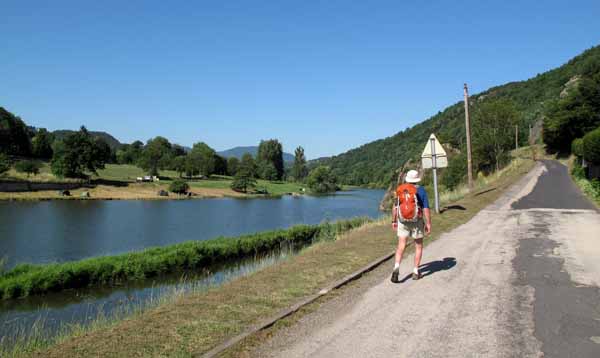
After a while we crossed the railway line again and started climbing away from the river. The only vehicle on the road was a travelling baker’s van, stopping at every house along the way and sounding its horn to summon the householder. There was so much gossiping combined with the shopping that we overtook it several times and arrived at the hamlet of Brenas at the same time.
We passed a cross to victims of the plague and it was easy to imagine how hard life must have been in this isolated corner of France. The communal bread oven was a more cheerful reminder of olden times.

Past Brenas the road continued but the van did not, as the bitumen soon gave way to a steep, fearsomely eroded dirt track clinging to the hillside. The surroundings were dry and desolate and it was like the road to nowhere, so it was a surprise to find ourselves entering a smartly-restored village – la Para.
The reason for this smartness turned out to be that it was only a few hundred metres from the highway in the forest above, and thus within commuting distance of the surrounding big towns.
As we went along the only street in the village, we stopped to chat with a woman in her rose garden. She had never seen anyone like us walking past before and was most curious about why we were doing it (we ask ourselves the same question quite often).
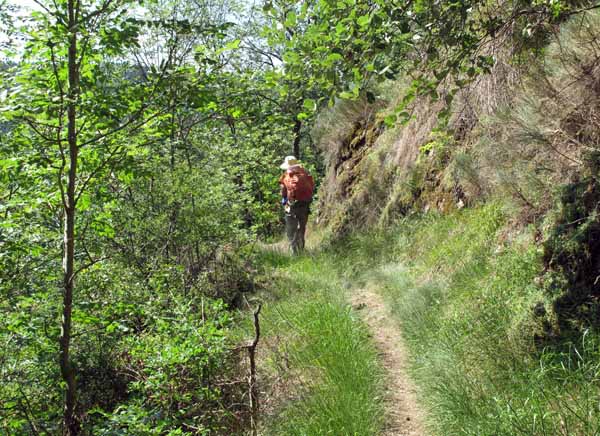
Then we left the road and walked through the forest to St-Ignac. The track was wide and level, with drystone walls and the remains of paving – clearly the old road. At St-Ignac, also prosperous-looking, we were briefly on the bitumen again before the track diverged at a large iron cross.
Beyond that it hugged the steep, forested escarpment above the river, descending steadily. We could see that it was as well-made as the previous old road, although narrower.
The cliff had been cut back to provide a secure footpath on the almost vertical slope. It was a classic GR route and very enjoyable.
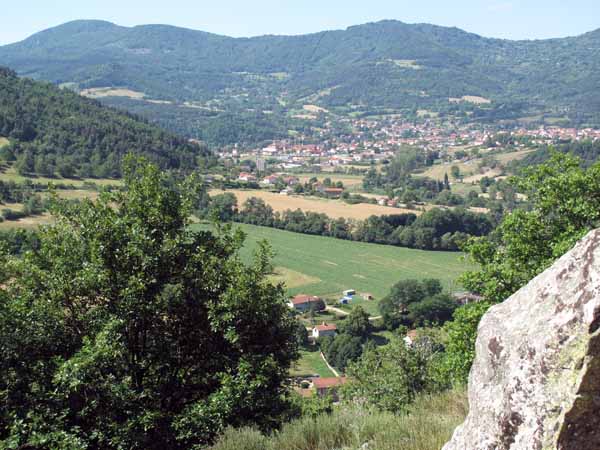
Below us was the Loire with its wide, cultivated flats and eventually we emerged at river level. A short walk across the fields brought us to the railway line and here we took to the road for the last kilometre into Retournac. This last kilometre up through the streets was more tiring than all the preceding morning’s walk, although the thought of coffee kept us hurrying along.
The central square of the town had a massive, beautiful church and was flanked by shops including several bars – equally beautiful to our eyes. It was noon, so people were arriving for lunch.
As we sat on a shady terrace with our coffee, we were joined by a group of ancient locals, but they soon decided that it was too breezy and went inside. Even we felt cool. Before we left, we asked the barman whether we could eat there in the evening – years of experience have taught us always to check – and he not only said yes, but persuaded us to book a table.
The walk down to the river was surprisingly long and we lost a lot of height before we came to the bridge, which made us wonder about going all the way back for dinner.
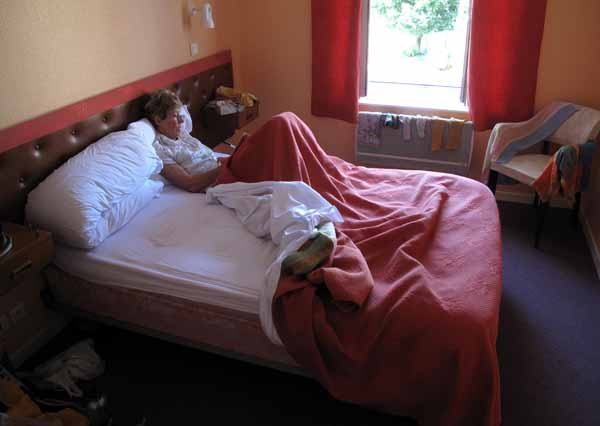
We knew that the camping ground was just over the bridge and, having seen the size of the one at Bas-en-Basset, we expected this one to be similarly vast, but all we could find was a riverside park, without a single caravan or tent. Although there was a building at the entrance with a peeling sign – evidently the former reception building – the place was totally defunct.
We were about to turn back dispiritedly and make the ascent to the town when we noticed a hotel, the Beau Rivage, a few steps away at the end of the bridge.
It looked very attractive to our tired eyes and Keith, in a sudden rush of generosity, declared that he would pay for a night there as a birthday present for me, although it was a couple of months after the event and I had already had a lot of presents.
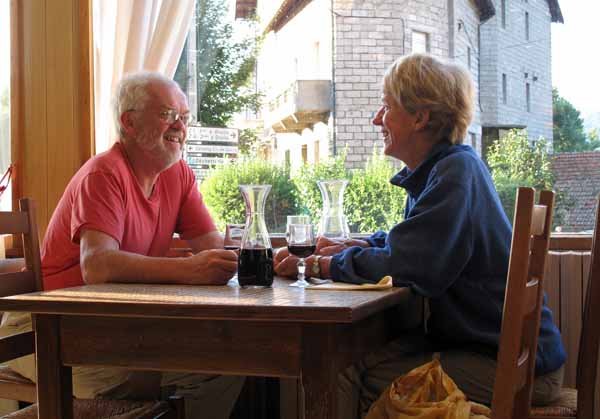
We soon found ourselves installed in a comfortable room looking over the river.
We had glorious showers and draped our washed clothes over the furniture while we ate a picnic lunch, then sank into slumber. It was delightful to be indoors, as the air was cold.
In the evening, we ate at the hotel, feeling slightly bad about having booked at the restaurant in the town, but not bad enough to make us go back such a long way.
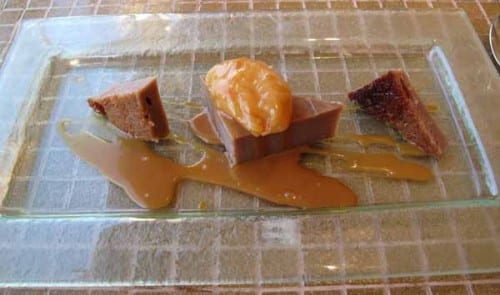
We had an apéritif on the terrace and were joined by a burly Danish family who were also staying at the hotel. It was too chilly for us outdoors, even with our warm jackets on, so we ate our dinner inside, but the Danes, who were dressed for summer in singlets and sundresses, remained firmly on the terrace.
We had three courses and wine, then finished off with the luxury of large coffees laced with cream to celebrate a fine day of walking, and of course my long-past birthday.
Previous day: Aurec-sur-Loire to Bas-en-Basset